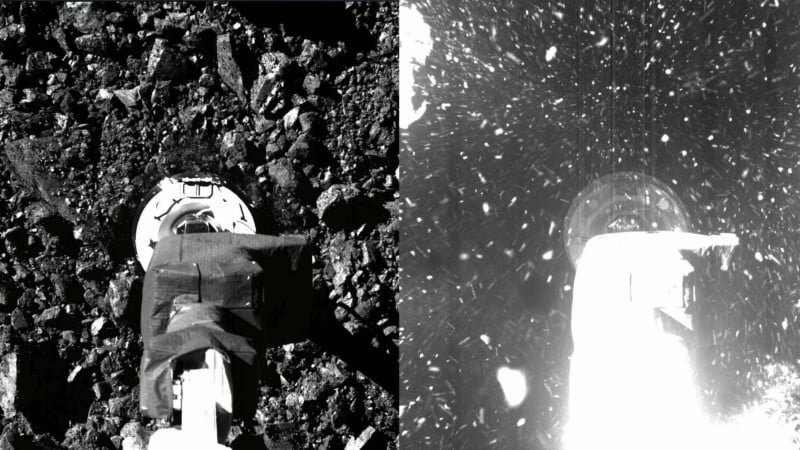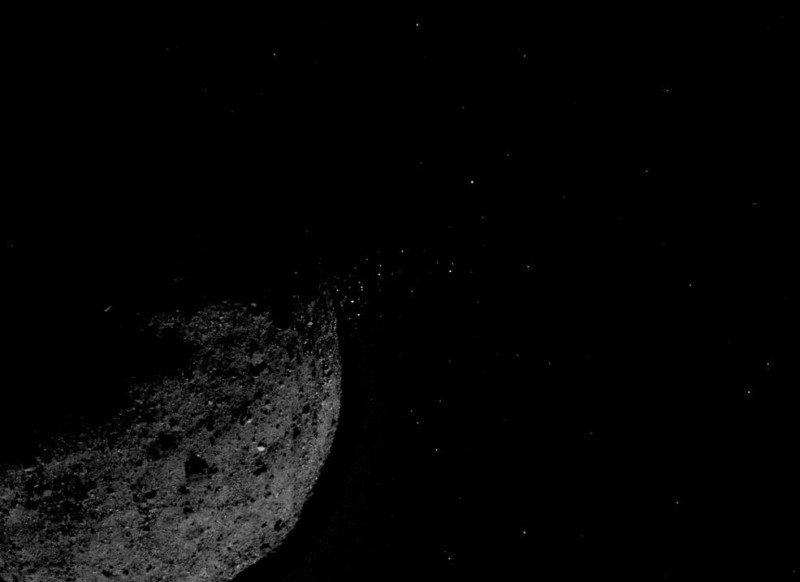New NASA Footage Shows Asteroid Surface That’s Like a ‘Plastic Ball Pit’
NASA has shared footage that its OSIRIS-REx spacecraft captured when it landed on the asteroid Bennu which shows that the surface was a lot less stable than anticipated, leading the space agency to compare it to a “plastic ball pit.”
On October 20, 2020, NASA’s OSIRIS-REx spacecraft briefly touched down on Bennu and collected a sample for return to Earth. During this “TAG event,” the spacecraft’s arm sank far deeper into the asteroid than expected, confirming that Bennu’s surface is incredibly weak. Now, scientists have used data from OSIRIS-REx to revisit the TAG event and better understand how Bennu’s loose upper layers are held together.
After analyzing data that the spacecraft gathered, NASA scientists have determined an “astonishing” fact: OSIRIS-REx would have sunk into Bennu’s surface if it had not fired its thrusters to back away from the asteroid immediately after it picked up dust and rocks from the surface.

“It turns out that the particles making up Bennu’s exterior are so loosely packed and lightly bound to each other that if a person were to step onto Bennu they would feel very little resistance, as if stepping into a pit of plastic balls that are popular play areas for kids,” NASA explains.
Curiously, the structure of the asteroid is a lot looser than anticipated, a fact that was published in a pair of papers in the journals Science and Science Advances on July 7.
“If Bennu was completely packed, that would imply nearly solid rock, but we found a lot of void space in the surface,” Kevin Walsh, a member of the OSIRIS-REx science team from Southwest Research Institute, says.
In photos and video published by NASA, the unusual structure of the asteroid can be seen as the feet of the OSIRIS-REx spacecraft make contact with the loose surface.
#OSIRISREx data gathered during sample collection show that asteroid Bennu's exterior is made up of loosely packed & lightly bound rock. So, standing on its surface would feel like being in a plastic ball pit.
Ready, set, jump! https://t.co/xX75KDjAFW pic.twitter.com/P0xxIte2jN
— NASA 360 (@NASA360) July 8, 2022
“Our expectations about the asteroid’s surface were completely wrong,” Dante Lauretta, principal investigator of OSIRIS-REx, says. What we saw was a huge wall of debris radiating out from the sample site. We were like, ‘Holy cow!’”
This information about the structure of Bennu will help inform expectations and observations of other asteroids, which NASA says could be useful in designing future asteroid missions and for developing methods to protect Earth from asteroid collisions.
Asteroids like Bennu, those which are barely held together by gravity or electrostatic force, could break apart if they were to enter Earth’s atmosphere and pose a different type of threat than a solid asteroid.
Bennu and OSIRIS-REx
Asteroid Bennu is one of Earth’s closest neighbors. This near-Earth asteroid is described as a rubble pile of rocks and boulders that was left over from the formation of the Solar System.

The Origins Spectral Interpretation Resource Identification Security-Regolith Explorer, or OSIRIS-REx, was launched in 2016 and is scheduled to return to Earth in 2023 with samples of Bennu in tow. The mission will help scientists investigate how planets formed and how life began, as well as improve the understanding of asteroids that could impact Earth.
Image credits: NASA/Goddard/University of Arizona/Lockheed Martin